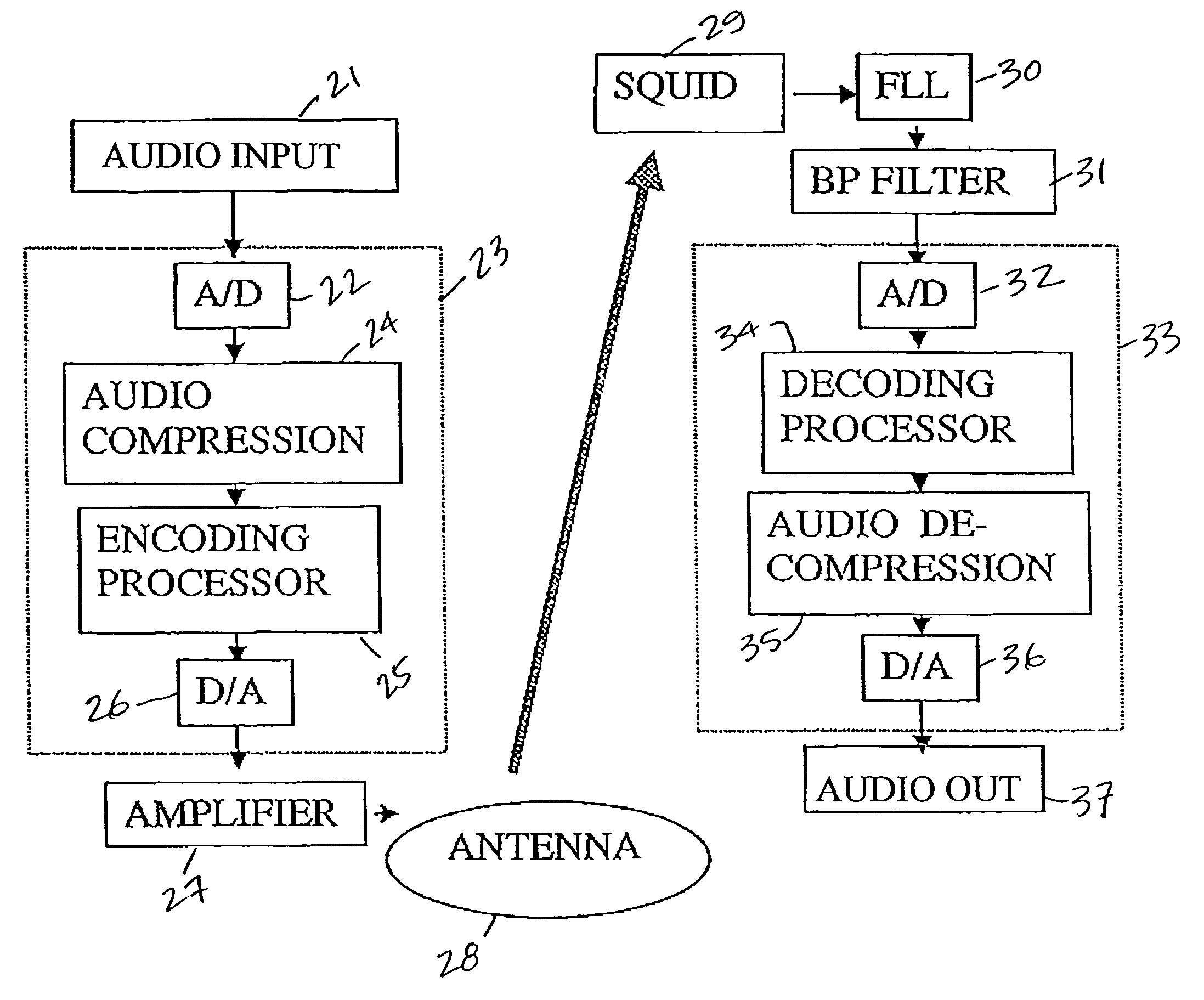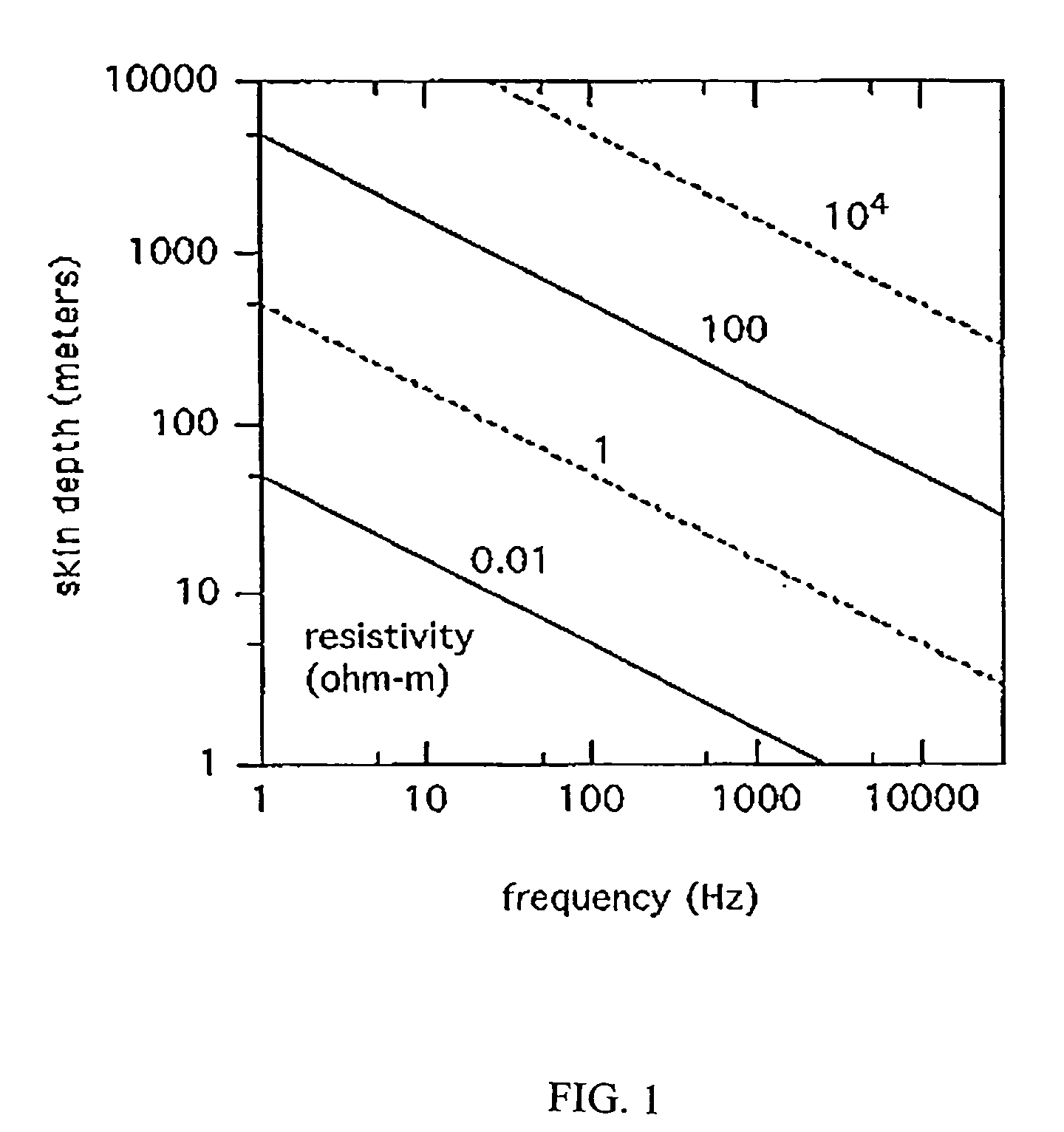Through-the-earth radio
- Summary
- Abstract
- Description
- Claims
- Application Information
AI Technical Summary
Benefits of technology
Problems solved by technology
Method used
Image
Examples
Embodiment Construction
[0029]The present invention provides audio communication deep into underground locations. The invention can most easily be understood through reference to the drawings.
[0030]Referring first to FIG. 2, where a block diagram of the present invention is shown. Audio to be transmitted is input to audio input 21 and sent to analog to digital (A / D) converter 22 on board 23. Audio input 21 may be any desired audio input device, including a conventional microphone. Audio input 21 can be configured to accept input from remotely located walkie-talkies or other personal communication devices. Board 23 contains all the components for both transmitting and receiving. However, in FIG. 2, board 23 is configured to transmit. As shown A / D converter 22 provides its signal to audio compression 24, where it is compressed, and sent to encoding processor 25. Encoding processor 25 uses quadrature phase shift keying (QPSK), which is a technique that uses a constant amplitude signal with a 90° phase shift t...
PUM
 Login to View More
Login to View More Abstract
Description
Claims
Application Information
 Login to View More
Login to View More - R&D
- Intellectual Property
- Life Sciences
- Materials
- Tech Scout
- Unparalleled Data Quality
- Higher Quality Content
- 60% Fewer Hallucinations
Browse by: Latest US Patents, China's latest patents, Technical Efficacy Thesaurus, Application Domain, Technology Topic, Popular Technical Reports.
© 2025 PatSnap. All rights reserved.Legal|Privacy policy|Modern Slavery Act Transparency Statement|Sitemap|About US| Contact US: help@patsnap.com



